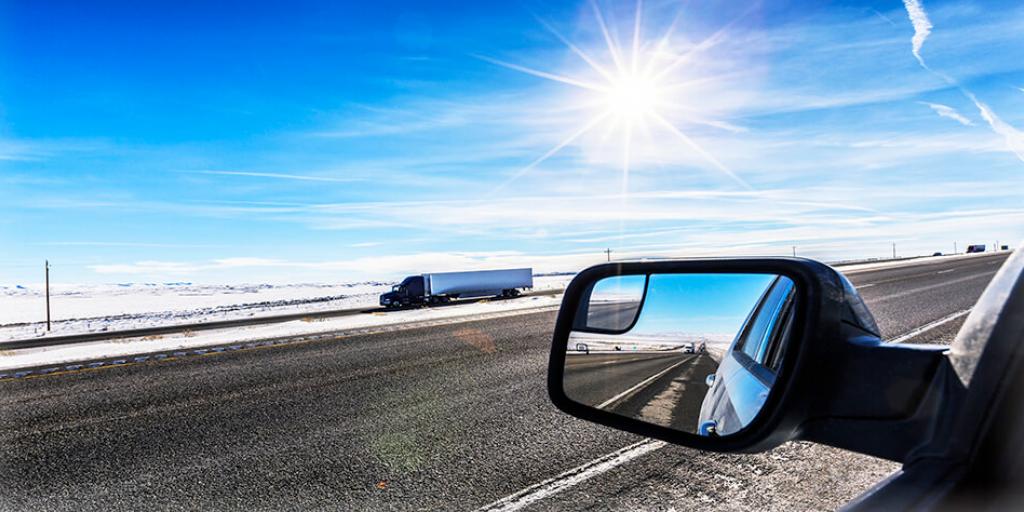
The Reason for the Rearview Mirror
Some time ago, I was traveling down the interstate when a most surprising thing happened. We were in the middle of a snowy day (which is actually not the surprising thing, considering January weather in upstate New York, where my family and I lived at the time). What was surprising, however, was the cascade of snow, ice, and gravel that landed on top of our windshield just before we went under a bridge!
A snowplow, again, not unusual for winters in upstate New York, had been traveling along an overpass perpendicular to us at a brisk pace, pushing a wave of snow before it. It just so happened that our paths crossed—in a manner of speaking—and we were in the right place at the wrong time!
As I pulled to the side of the road, I could see that our windshield had done its job, protecting my wife and me in the front seats, but a spider web of cracks now covered the glass from left to right. Thankfully, no damage had been done to the hood of the van, or anywhere else, as far as we could tell—except for the side view mirror, which had been totally smashed.
That brings me to the point of this story. For a small piece of furniture on a car, you might be surprised how much you rely on your side view mirror. Just like in life, when we drive, we had better be looking out in front of us for most of the time—looking far down the road, then closer, as we scan for potential hazards, pitfalls, and keeping a focus on where we’re going. If we turn our head to one side or another, we tend to actually drift that way, which of course, is dangerous when driving 65 miles per hour down the interstate.
If we tried to drive our car by using the rearview mirrors, looking behind us to navigate where we are going, we would have a hard time driving.
But at the same time, our rearview mirrors, both the primary mirror in front of us, plus the side view mirrors on either side of the car, serve a very valuable purpose. In fact, while driving temporarily without the driver’s side mirror, I learned just how critical the side view mirror is. Without that mirror, I had to virtually turn my head around to see what was happening beside me. Without the benefit of that mirror, making a move into the left lane as one travels down the highway is a dangerous undertaking.
The Spring Holy Day time of year is a time for Christians to adjust their focus and keep moving ahead. We must keep our eye on the road, seeking God’s Kingdom above all. If we lose that focus, we can become discouraged. We can lose our way or wander off the road. We can’t travel down the road of our life just navigating with mirrors that show where we came from. We want to move forward. But at the same time, we need to take stock occasionally—as we do at Passover time. We need to examine ourselves, as we read in 1 Corinthians. When we examine ourselves, we think about our life, what is around us, what potential blind spots we need to be aware of, and what old habits may be creeping up from behind. We think of the lessons we have learned from the road behind us, and apply them to our life, moving forward. In some ways, life is like a highway. And there is a reason for the rearview mirror.
To help focus your efforts more firmly on Christ and His way, read our articles, “The Missing ‘R’ Word” and “Must We Obey God To Be Saved?” It is never too late to learn!
Stay up to date with our Weekly Digest Email!
Tomorrow's World ComMentary Podcast
Subscribe to Tomorrow's World Commentary podcasts on iTunes and Google Play!



